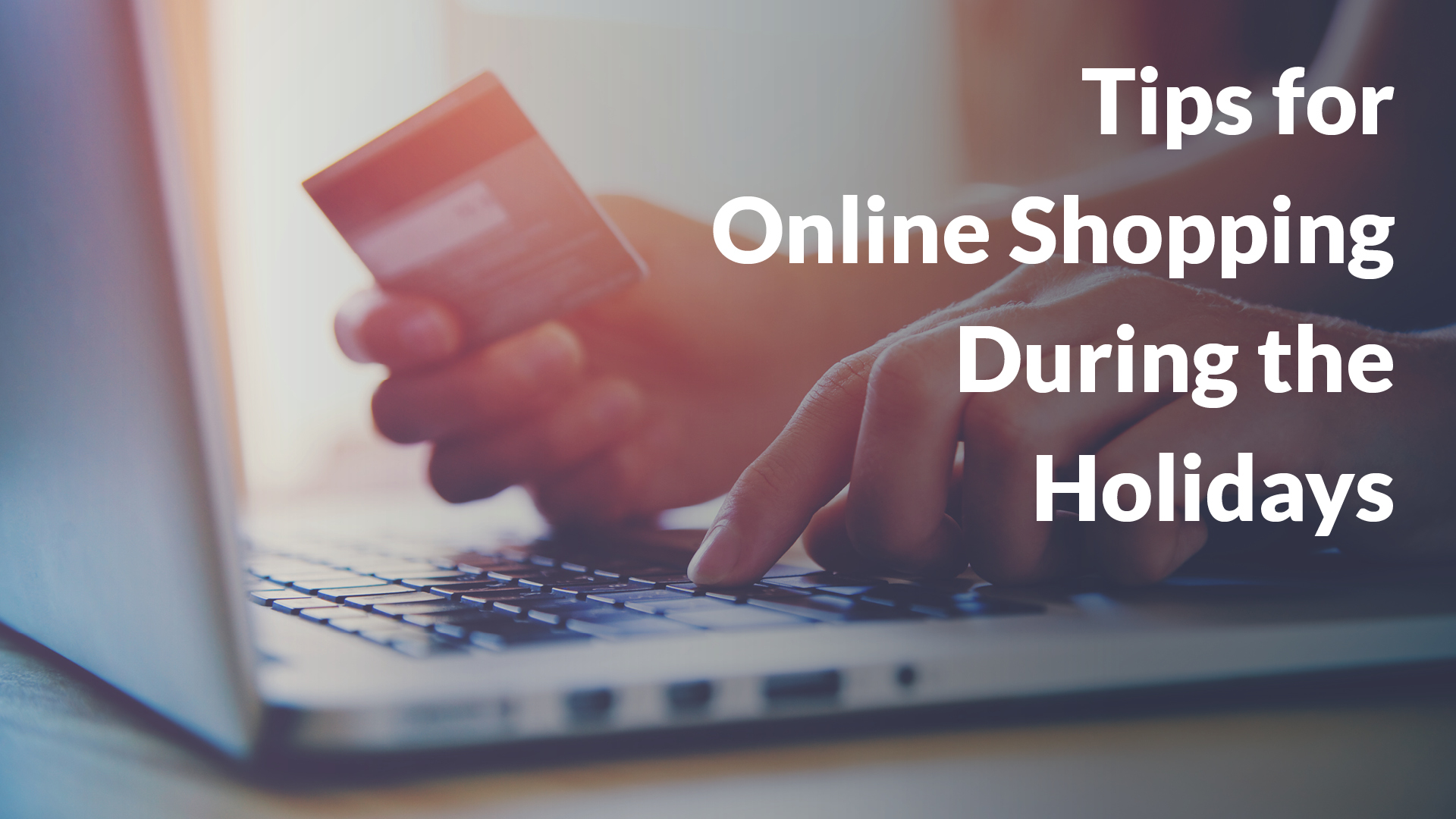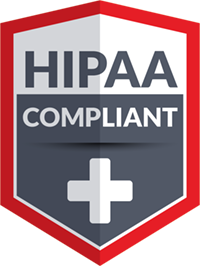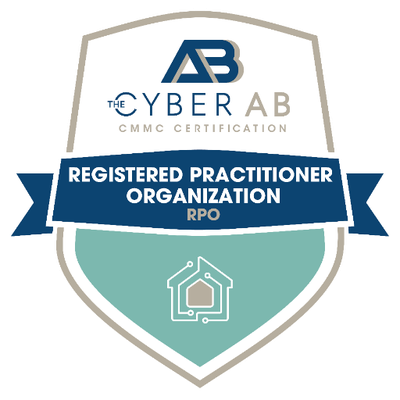
Checkin’ It Twice
Your Guide to Safe and Secure Holiday E-Shopping
You did it again. You waited too long to buy your holiday gifts and now you’re making your way to the local mall for a last-minute shopping spree. You grip the steering wheel, bracing yourself for what’s sure to be a crowded parking lot. But when you get there, you can’t believe it.
The lot is practically empty. Is this place closed? you wonder, as you park with ease. You walk into the mall and see just a few other people shopping. Where is everybody?
If online shopping was popular before the COVID-19 pandemic, now it’s the norm. The National Retail Federation reports that holiday spending is expected to reach record levels this year, with online shopping projected to increase between 7% and 9% from 2022 levels. More and more of us are foregoing the in-person transaction for the digital purchase.
This is hardly surprising. Online shopping is extremely convenient, and there’s just something magical about strolling those virtual aisles, surrounded by possibilities, a world of goods and services mere clicks away…Stop!
Before you pluck a single item from those seemingly endless digital shelves, take a few minutes to read this article. That’s because online shopping is dangerous – more dangerous than ever, in fact – and we’re going to share some crucial information to help you stay safe this Holiday Season.
Why is Online Shopping Dangerous?
Let’s start with the basic question of why: Why is online shopping so dangerous? It doesn’t feel particularly dangerous, curling up on your couch with your laptop, wandering cyber aisles filled with alluring products. But the dangers are actually readily apparent when you think about it:
You can’t see the products/services. Will the jacket look as good in person as it does in the pictures? Who knows. Not you.
You can’t speak directly with the seller. Are they nice? Legitimate? The anonymity that the internet affords can help cybercriminals mask their true colors and bad intentions.
Sellers can easily go “poof” after giving you a raw deal. A brick-and-mortar store can’t disappear as easily as an online scammer, and pursuing remediation (returns, refunds, etc.) in the event of a fraudulent online transaction can be a truly nightmarish ordeal.
You’re sharing sensitive info, including “Personally Identifiable Information” (PII). Sure, if you’re using a credit or debit card, you’re also sharing PII when you make purchases in physical stores, but shopping online introduces additional risks including but not limited to the fact that it’s shopping online – the internet is a dangerous place, plagued by cybersecurity vulnerabilities that simply don’t apply to the real, physical world.
This last point about the internet being inherently dangerous brings us to a broader truth about the nature of online shopping:
Because shopping online is more convenient than traditional shopping, it’s also more dangerous, illustrating once again that there is a trade-off between security and convenience. You can’t optimize both, so just know that the moment you decide to enter the digital marketplace, you’re stepping into a fundamentally risky environment.
But there ARE things you can do to mitigate the risks of online shopping, both this Holiday Season and throughout the year. And since we know most of you are going to do at least some e-shopping this month, we want to share our tips for staying safe and secure online.
16 Tips for Safe and Secure Holiday E-Shopping
Tip #1 – Big Names ≠ Safe Shopping
Just because you’re purchasing something from Amazon, Facebook, Instagram, or another of the big-name platforms, doesn’t mean you’re immune from scams and risk. The reason for this is simple: these well-known online marketplaces host numerous 3rd-party sellers, and while many of these sellers are perfectly honest and legitimate, many aren’t.
Tip #2 – Slow Down
In a world where online shopping scams lurk around every corner, patience is your friend. Even in the face of “limited time” offers and “act now” exhortations, it’s crucial to resist the urge to make hasty purchases, and to take the time to inspect product details, verify seller credentials, and so forth.
Tip #3 – Hover to Cover (Your A**!)
When shopping – or doing anything – online, hover your cursor over links before clicking to preview the actual URL. If there’s anything suspicious about the URL, don’t click it!
Tip #4 – Don’t Always Say “Yes” to HTTPS
It’s good cyber practice to be wary of websites that don’t have “https” (just “http”) in their URL, as these websites are generally less secure than ones with encrypted connections. However, you should also verify a site’s legitimacy separately, through other means. Scammers can use secure connections too, and the mere presence of “https” in a URL by no means entails that the site is safe to use.
Tip #5 – Check for Contact Info
Say you’re on the verge of making an online purchase, but want to check out the seller’s website to see if they’re legitimate. One thing to look for is contact info. Legitimate businesses provide contact information. If it’s missing or seems dubious, reconsider the transaction. And if the only way to get in touch is by filling out a form, run in the other direction!
Tip #6 – Beware of Social Media Ads
Cybersecurity experts are unanimous in their warning to be wary of social media ads this Holiday Season. Remember tip #1, and don’t trust an ad just because it shows up on your social feed. As per the FTC, 1 in 4 people who have suffered financial losses due to fraud since 2021 reported that the scam began on social media.
Tip #7 – Too Good to be True? Likely.
If you encounter an out-of-this-world, once-in-a-lifetime type of deal, don’t get swept up in your excitement. Rather, listen to that little voice in your head asking: Is this perhaps too good to be true? Because there’s a good chance it is – a lot of scams start with a highly appealing offer, but end with you losing a lot of money!
Tip #8 – Sort with Caution
If you’re on a major selling platform like Amazon, you might like to sort search results “by price,” and specifically, from “low to high.” This isn’t a terrible practice, but it comes with risks; scammers will sometime set the price of a fraudulent item at a penny less than the actual manufacturer’s price, knowing that you’ll see their offer at the top of your list.
Tip #9 – Look ‘Em Up
If you have even a speck of doubt about a seller’s legitimacy – and in almost every case, you should have at least a speck – do some research to establish whether you’re dealing with a scammer. The Better Business Bureau (BBB) has a great website for this purpose (you can also report scams on it). You can also use trusty Google: just type in the company name and the word “scam” to get the ball rolling on your detective work.
Tip #10 – Gift Card = Red Flag
Any offer you encounter that involves a gift card should be viewed with the utmost suspicion. Gift card scams are incredibly popular among cybercriminals, so as a rule of thumb, avoid paying for anything online using gift cards, and only purchase gift cards from reputable retailers (even then, you want to run your finger over the back to see if the sticker has been scratched off or tampered with).
Tip #11 – Give Wisely
Scammers know that a lot of folks open their wallets to charities during the Holiday Season, and they prey on people’s good intentions by creating fake charities and soliciting donations. So be on guard against this sort of scam (i.e., as with any online transaction, do your research before you part with a single cent). BBB’s Wise Giving Alliance is a great website for checking the legitimacy of charitable organizations (although it’s important to note that not every legitimate and reputable charity has received BBB accreditation). Other useful resources include Charity Navigator, Charity Watch and the IRS website.
>>>Just a quick note: the previous tips pertain to the time before making a purchase. The subsequent tips apply to the moment of purchase and after.
Tip #12 – Capture the Moment with a Screenshot
Document your transactions, including product details and seller information, in case you need evidence for dispute resolution. Documentation serves as evidence if you get scammed and need to approach your credit card company for remediation.
Tip #13 – Credit > Debit
If you’re going to shop online, it’s better to use a credit card than a debit card, as credit cards often offer additional fraud protection, limiting your liability and providing an extra layer of security against potential unauthorized transactions.
Tip #14 – Buy Directly from the Manufacturer
If you want to be extra careful, consider only buying online goods and services directly from the manufacturer to avoid getting ripped off by fraudulent 3rd-party sellers.
Tip #15 – Watch Out for Fake Delivery Notification Texts
If you’re waiting on a package and you receive a text message regarding its delivery status, you’re going to be tempted to engage, most likely in the form of clicking a link. But our suggestion is that you avoid tracking any delivery via SMS. Play it safe and always track deliveries through official websites, and never by clicking links in texts or emails. And remember, legitimate delivery companies won’t request sensitive information like your SSN or credit card number.
Tip #16 – If You Get Scammed, Report It
This one might sound obvious, but plenty of people fail to report scams whether out of embarrassment or simply a desire to leave the unfortunate event in the past. But reporting scams is a vital part of keeping the online community safe; you don’t want the same scammer who duped you to move on to one of your family members. Furthermore, following up with the appropriate institutions and authorities can help you mitigate damages and possibly recover some of your financial losses.
Read this article for guidance on what to do if you fall victim to an online scam.
The Takeaway
Let’s be honest. It’s 2024. Chances are, you’re going to do some – if not all – of your holiday shopping online this December. Our goal with these 15 tips isn’t to scare you away from the digital marketplace. We just want you to stay safe. Very few things can ruin the festive spirit like losing hundreds or even thousands of dollars to an online scammer – or finding out someone you care about has fallen victim.
According to a McAfee survey, 36% of polled Americans fell prey to an online scam in the previous holiday season, with 1 in 4 of these individuals experiencing financial losses exceeding a thousand dollars.
But a little vigilance can go a long way. So study our tips, seek out cybersecurity advice from your trusted IT provider, and always, always verify the legitimacy of an online seller before sharing sensitive information or making transactions.
Finally, share what you’ve learned with others. An informed and united front is precisely what cybercriminals don’t want to encounter this Holiday Season.
Wishing you all a safe, secure, and joyful holiday shopping experience!



